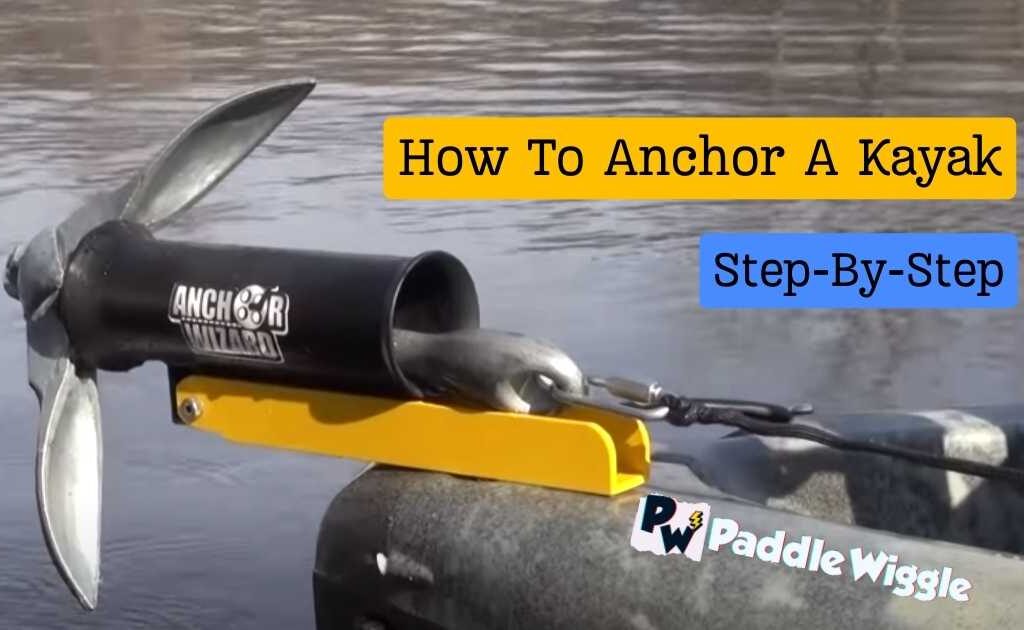Loading a kayak onto a J-rack by yourself might seem tricky, but don’t worry, we’re here to make it easy. J-racks are great for carrying kayaks on your vehicle, but they can be a challenge when you’re alone. Safety is crucial when doing this solo.
In this guide, we’ll show you how to load your kayak onto a J-rack by yourself, step by step, while keeping safety in mind. We’ll cover everything from positioning the front cradle to securing your kayak properly, making the process hassle-free.
Let’s dive in.
Contents
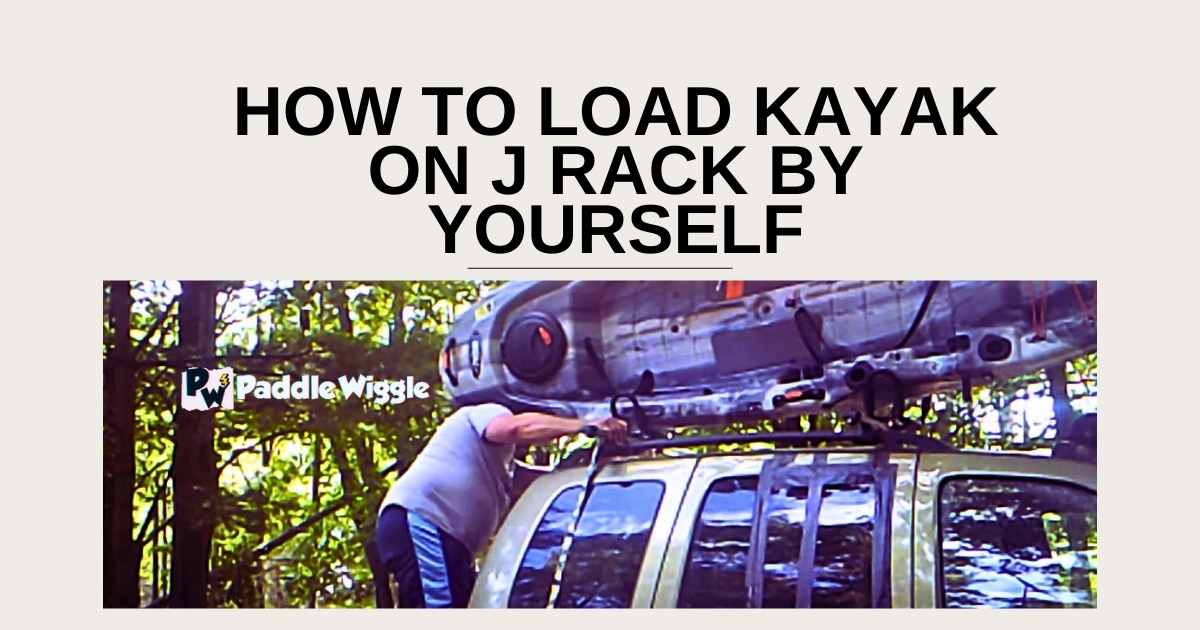

Step-by-Step Guide: Loading a Kayak By Yourself
Loading a kayak by yourself can be a challenging task, but with the right technique and some practice, it can become a seamless process. Whether you are heading out for a solo kayaking adventure or simply need to transport your kayak to the water, knowing how to load your kayak onto your vehicle properly is essential.
In this step-by-step guide, we will walk you through the process of loading a kayak by yourself, ensuring that you can do it safely and efficiently.
So, let’s get started and learn how to load your kayak with ease!
Step #1. Preparing Your Vehicle and J Rack for Kayak Loading
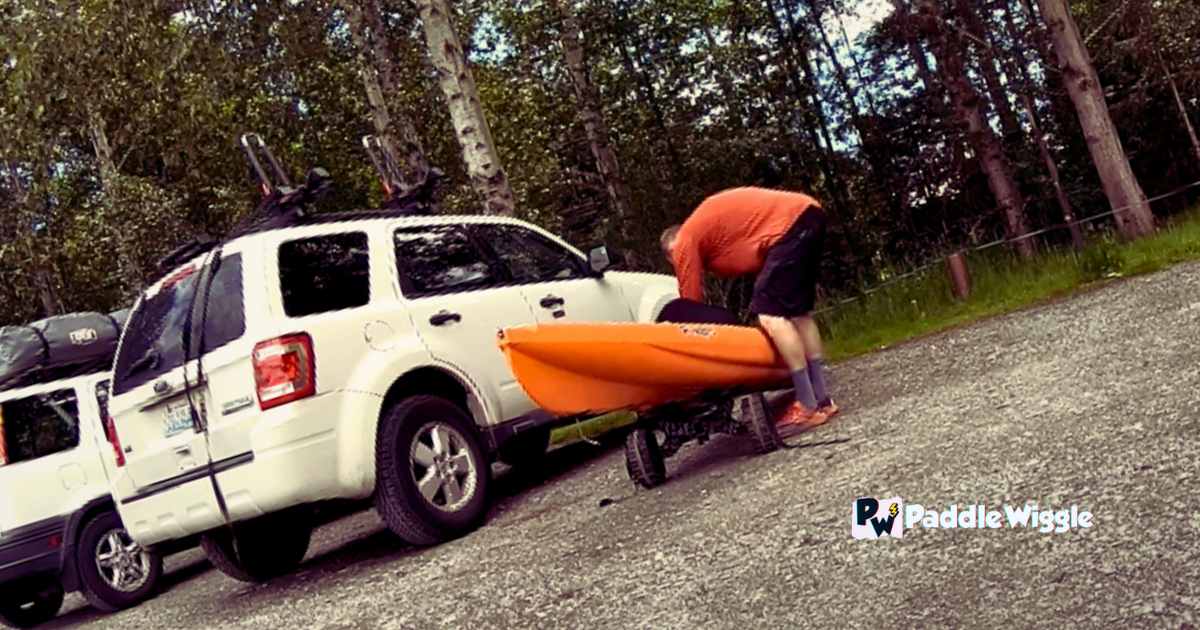

Before you can load your kayak onto a J rack by yourself, it’s important to make sure that your vehicle and rack are properly prepared. Here’s what you need to do:
- Check your vehicle: Ensure that your vehicle is parked on a level surface with the parking brake engaged. Make sure there is enough space around the vehicle to maneuver the kayak safely.
- Inspect your J rack: Take a look at your J rack to ensure it is securely attached to your vehicle’s roof or crossbars. Check for any signs of damage or wear that could compromise its stability.
- Prepare padding: To protect both your kayak and the J rack, place foam pads or pool noodles on the arms of the J rack where the kayak will rest. This will prevent scratches and provide extra cushioning during transport.
Step #2. Lifting and Positioning the Kayak onto the J Rack Safely


Now that you’ve prepared your vehicle and J rack, it’s time to lift and position your kayak onto the rack by yourself. Follow these steps carefully:
- Approach from the rear: Stand behind your vehicle, facing the back end, with one hand on either side of the cockpit of your kayak.
- Lift with proper technique: Bend at the knees, keeping your back straight, and use your legs to lift the kayak off the ground while maintaining a firm grip on each side of the cockpit.
- Positioning on the J rack: With control, lift one end of the kayak onto one side of the J rack while ensuring it rests securely on top of the foam pads or pool noodles. Then, gently lower down its other end onto the opposite arm of the J-rack.
Step #3. Lift the Kayak onto the J Rack
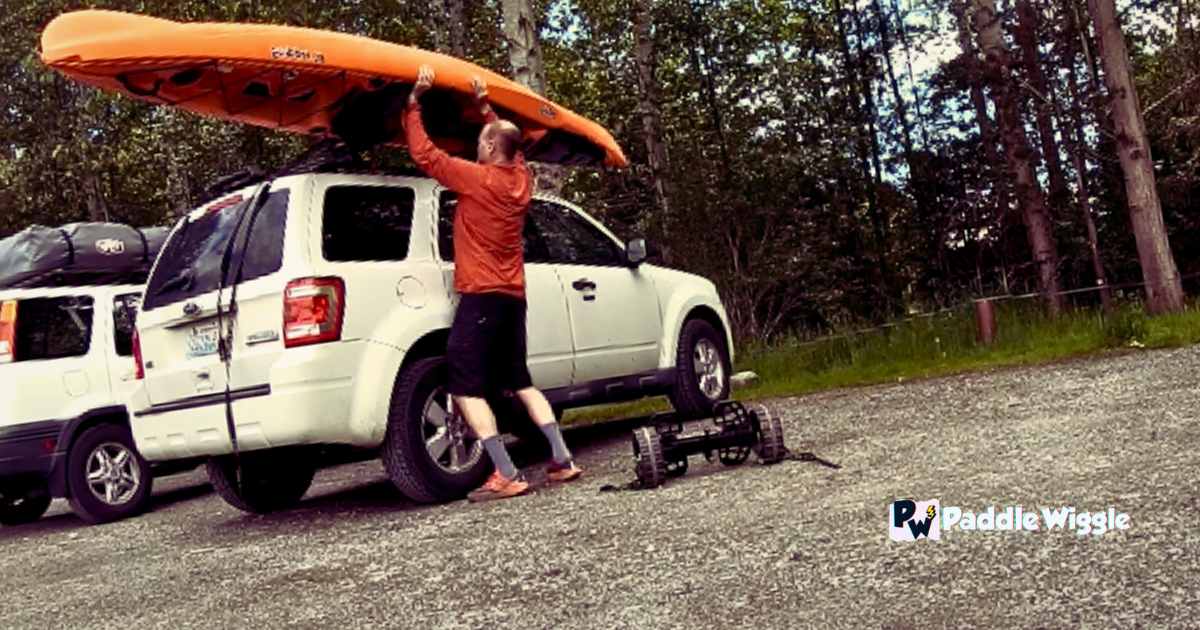

As you reach the J rack, carefully raise the kayak above your head. Importantly, use the strength of your legs and core muscles to lift it, avoiding excessive reliance on your arms. The goal is to reduce strain on your upper body and prevent potential injury. Slowly position the kayak onto the J rack, ensuring that it is centered and securely resting in place.
Step #4. Adjust the Kayak Position
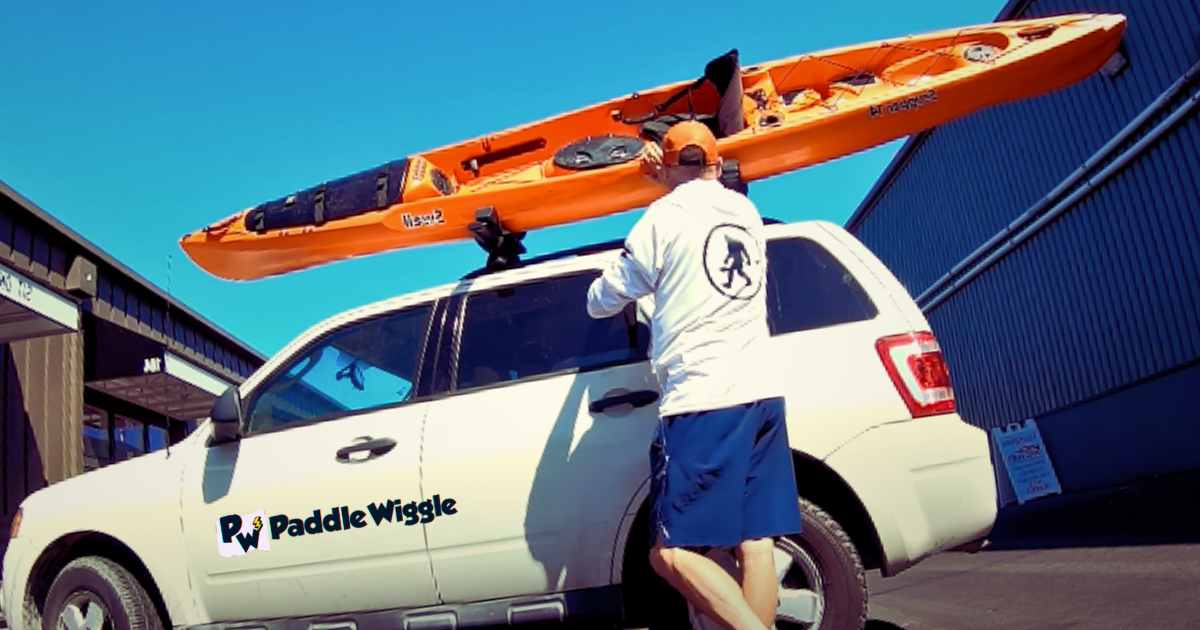

After placing the kayak on the J rack, you may need to make minor adjustments for optimal weight distribution. This can involve sliding the kayak forward or backward to achieve better balance. Proper weight distribution helps maintain vehicle stability during transport.
Step #5. Secure the Kayak
Use straps or tie-downs designed for securing kayaks to fasten your kayak to the J rack. Ensure that the straps are tightened securely, preventing any movement or shifting during transit. Properly secured straps are crucial to avoid the kayak becoming dislodged or damaged while on the road.
Step #6. Double-Check Everything
Before you begin your journey, take a final moment to double-check that the kayak is securely fastened to the J rack. Give the kayak a gentle shake to confirm there is no excessive movement. Ensuring that everything is properly secured is essential for your safety and the safety of others on the road.
Advantages & Disadvantages of Using a J Rack for Kayak Loading
Kayak loading can be a challenging task, especially if you don’t have the right equipment. One popular option for loading kayaks onto a vehicle is using a J rack. A J rack is a type of roof rack that has a J-shaped design, allowing you to secure your kayak in place easily. While J racks offer several advantages, they also come with a few disadvantages.
Let’s explore the advantages and disadvantages of using a J rack for kayak loading, helping you make an informed decision when it comes to transporting your kayak.
advantages of Using a J Rack
Using a J rack for loading your kayak onto your vehicle has several advantages. First and foremost, it saves space. The unique design of the J rack allows you to position your kayak vertically on the side of your car, leaving more room for other gear or additional kayaks. This is especially beneficial if you have a smaller vehicle or limited storage space at home.
Another advantage is the ease of use. With a J rack, you can load and unload your kayak by yourself without needing assistance from others. The angled shape of the rack cradles the kayak securely, preventing it from sliding off during transportation. This makes it convenient for solo kayakers who enjoy exploring new waters on their own.
J racks are generally affordable compared to other types of kayak racks. They are readily available in various sizes and materials to fit different budgets. So, if you’re looking for an economical option that still provides reliable support for your kayak, a J rack might be the way to go.
Potential Drawbacks of Using a J Rack
While there are advantages to using a J rack, it’s important to consider some potential drawbacks as well. One limitation is the weight capacity of the rack. Most J racks have weight limits ranging from 75 to 150 pounds, depending on the specific model and brand. If your kayak exceeds this weight limit or if you plan on carrying multiple kayaks simultaneously, you may need to explore alternative options with higher weight capacities.
Another concern is the possibility of damage to your kayaks during loading and unloading. The narrow design of the J rack means that there is less surface area supporting your kayak compared to other types of racks like saddle racks or stacker racks. This could potentially lead to scratches or dents on your kayak’s hull if not handled carefully during the loading process.
Comparing J Racks with Other Types of Kayak Racks
It’s essential to evaluate your personal preferences and specific needs. While J racks offer space-saving benefits and ease of use, other types of racks may better suit certain situations. Here’s a quick comparison:
- Saddle Racks: These racks provide more surface area contact with your kayak, distributing the weight evenly and reducing the risk of damage. However, they may require additional straps for secure attachment.
- Stacker Racks: These racks allow you to transport multiple kayaks at once, making them ideal for group outings or family trips. However, loading and unloading can be more challenging due to their stacked configuration.
Ultimately, the choice between a J rack and other types of kayak racks depends on factors such as your vehicle’s roof design, the number of kayaks you plan to transport, and your budget.
Other Types of Kayak Racks and Compatibility With Loading Alone
If you’re not sold on the idea of using a J rack for loading your kayak, don’t worry! There are other options available that may better suit your needs. Let’s take a look at some different types of kayak racks and the vehicles they are compatible with.
Saddle-Style Racks
Saddle-style racks, also known as cradle or kayak stacker racks, are an alternative to J racks. These racks feature padded cradles that hold your kayak securely in place. They typically require two crossbars on your roof rack system for installation.
Advantages:
- Provides excellent support for kayaks with irregular shapes or uneven bottoms.
- Allows you to transport multiple kayaks at once by stacking them vertically.
- Offers easy loading and unloading with its wide saddle design.
Limitations:
- It may require additional hardware or accessories like bow/stern tie-downs for added stability during transport.
- It can be more challenging to load and secure compared to J racks.
- Requires enough space on your vehicle’s roof rack system to accommodate the width of the stacked kayaks.
Other Rack Options
Aside from saddle-style racks, there are various other types of kayak racks available in the market. Here are a few examples:
- J-Cradle Racks: Similar to J racks but with a slightly different design, these racks provide a secure fit for most kayaks while allowing more clearance between multiple loaded kayaks.
- Vertical Stackers: These racks allow you to store multiple kayaks vertically on their sides, saving space on your roof rack system.
- Roller Racks: Ideal if you struggle with lifting heavy kayaks onto the roof of your vehicle, roller racks come equipped with integrated rollers that make loading and unloading easier.
Vehicle Compatibility
When choosing an alternative type of kayak rack, it’s crucial to consider the compatibility with your vehicle. Here are some factors to keep in mind:
- Roof Rack System: Ensure that your vehicle has a roof rack system or crossbars installed. Different kayak racks may require specific types of crossbars or mounting hardware.
- Weight Capacity: Check the weight capacity of both your vehicle’s roof rack system and the kayak rack itself. Make sure they can handle the weight of your kayak.
- Mounting Options: Some vehicles have pre-installed mounting points on their roofs, while others may require aftermarket solutions like clips or towers.
- Clearance Height: Consider the height of your vehicle with the loaded kayaks attached. Make sure you have enough clearance to enter garages, drive-thrus, or other low-clearance areas.
Remember, not all kayak racks are compatible with every type of vehicle. It’s essential to consult the manufacturer’s guidelines and specifications to ensure a proper fit and safe transport.
So, if a J rack doesn’t meet your requirements or isn’t compatible with your vehicle, don’t worry! There are plenty of other options available that can securely transport your kayak while providing convenience and peace of mind.
Learn More
Can I use a J rack with different types of kayaks?
Yes, J racks are versatile and can accommodate various types of kayaks, including sit-on-top kayaks, recreational kayaks, touring kayaks, and even some fishing kayaks. Just make sure to check the weight capacity of your chosen J rack model to ensure it can safely support your kayak.
How do I know if my vehicle is compatible with a J rack?
Most vehicles with crossbars or roof rails are compatible with J racks. However, it’s essential to check the manufacturer’s guidelines for weight limits and compatibility before purchasing or installing a J rack on your vehicle.
Final Words
To sum it up, loading your kayak onto a J-rack by yourself can be done with ease if you follow the steps and safety tips in this guide. You’ll be able to make your solo kayaking trips more enjoyable and accessible. So, don’t hesitate to start your kayaking adventures, knowing you have the skills to load your kayak safely and confidently.

